Article's Content
Here’s a quote that I want every content marketer to remember when thinking about content repurposing:
Opportunities multiply as they are seized…
This is a quote from Sun Tzu in the Art of War. It’s relevant to marketers because every time you press publish on a new piece of content, you’re going to be met with new opportunities.
If you’ve developed an asset that is great, it will result in more opportunities; if you take advantage of those opportunities and continue creating great things, you will start to see more and more opportunities arise and the cycle of opportunity will continue…
The best marketers take advantage of initial opportunities…
They see a keyword that has a ton of potential and low competition, they develop a stellar asset, promote it well and seize the day by ranking #1. Flawless victory.
But once they’ve achieved that – they have a variety of new decisions in front of them:
Can we repurpose this? What else should we do with it? How else can we connect with people visiting the page? What can we do to capture the visitors mail? Should we try to capture their email? What should be the call to action at the end of the post? Should we run remarketing ads? Can we apply this same SEO strategy & format to another topic?
There are more opportunities to take advantage of because the first opportunity was seized…
You must be open minded to identify these types of opportunities. You must have the resources at your healm, if you’re going to capitalize on them. And you must be flexible with your strategy to have the agility to move swiftly and seize new opportunities as they come up.
For many marketers…
We have opportunities every time we press publish on a new blog post. One of the opportunities that is often overlooked is the power of Content Repurposing. You might be wondering:
What is content repurposing? Why do I care? And how does it work?
Content repurposing is the act of taking an initial content asset and turning it into a content asset beyond its original format. Once you press publish on an asset, you’re opening yourself up to a vast number of opportunities for that asset to thrive in a new format.
For example – A blog post can be repurposed in many ways. You can take one blog post, turn it into a LinkedIn update, a YouTube video, a slideshow in PDF format or an infographic:

But what happens next is where things get really interesting.
That one blog post, that became four assets, now presents a plethora of new opportunities.
For example – That YouTube video created from the blog post could become a snippet that is shared on Instagram, it could be shared as a pre-recorded ‘Live’ video on Facebook, it could be edited into a few sound bites and it could be turned into a podcast episode with just the audio. The Infographic could become a part of a Quora answer, uploaded with new text on Medium and submitted to Reddit. The opportunities after creating just a few assets are endless…
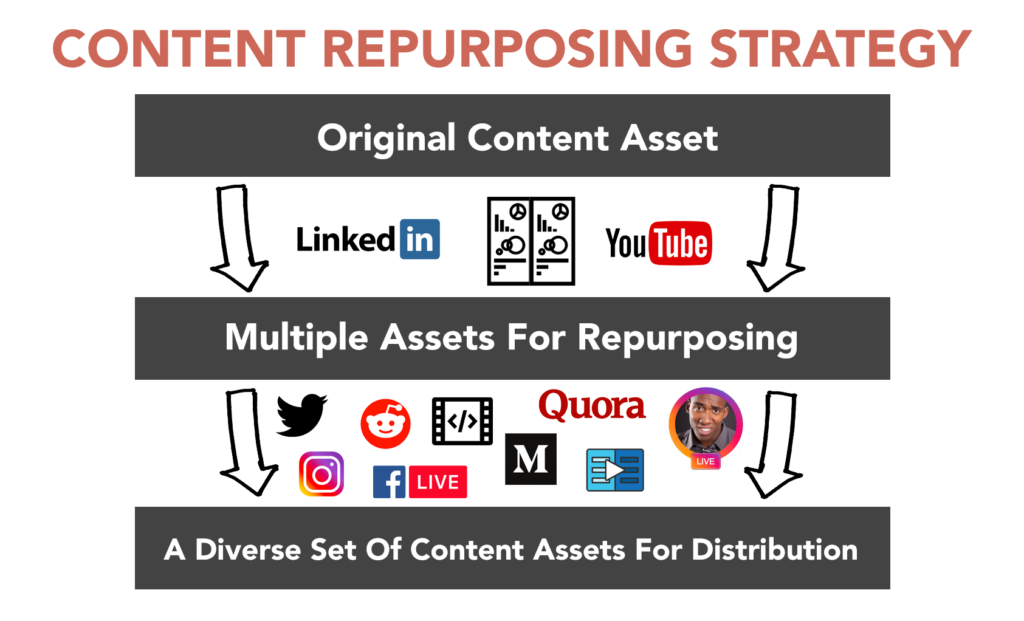
That’s content repurposing at its finest. Or, as we like to call it at Foundation:
This is a remix.
You can apply the same repurposing strategy to that infographic, podcast and LinkedIn update to create even more assets for your brand. Let’s dive into a few examples of content repurposing and how you can apply this approach to your own content marketing efforts moving forward.
Here’s a couple of examples to use for content repurposing inspiration:
Create A YouTube Video From The Blog Post
Blog posts are one of the most valuable assets for content repurposing. If you’ve written a 500 word blog post or a 3500 word blog post — they both can be used and repurposed. A few months back, I published a blog post highlighting common LinkedIn mistakes:
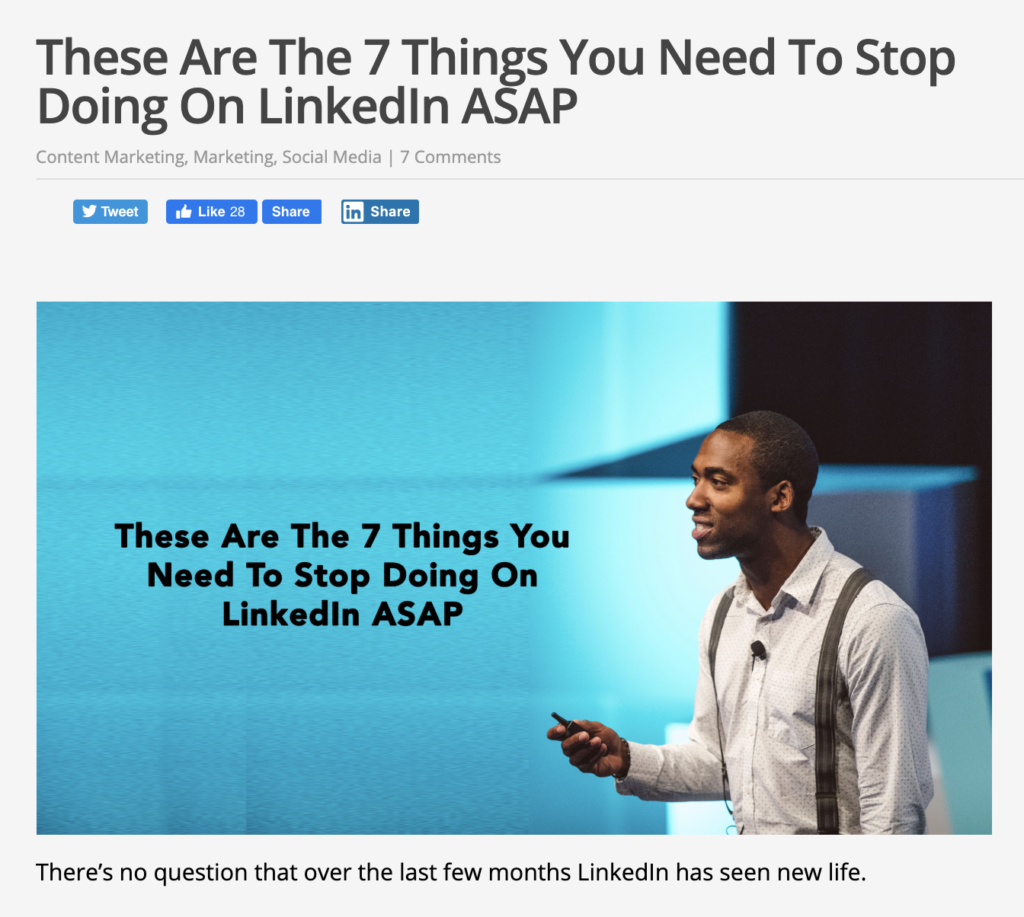
This piece could have lived as a single blog post, but upon pressing publish and receiving a positive response from the community, I saw an opportunity to repurpose it into a YouTube video as well:
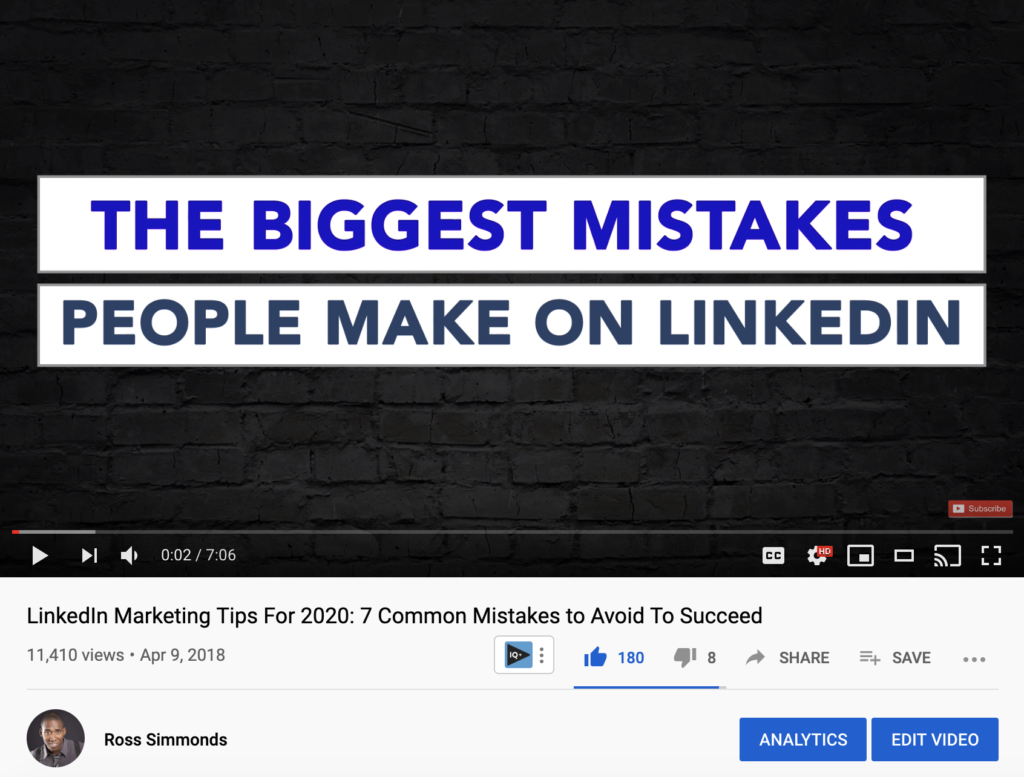
The video generated 11,000+ views to date, with the vast majority of them coming directly from the YouTube ecosystem. 34% of the visits came from people using YouTube search directly, 10% from channel pages and 6% from being included on YouTube as a “Suggested Video” when people are browsing the site.
Here’s a snapshot of the various ways people came across the video:
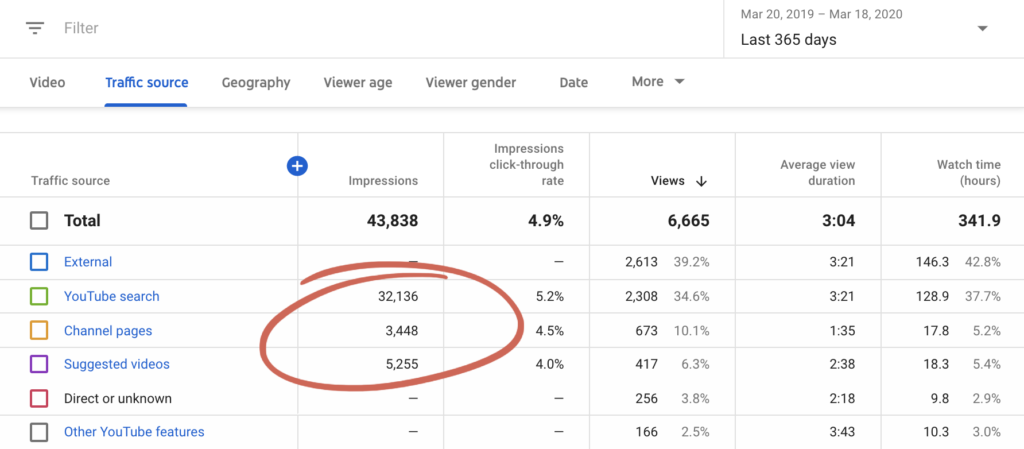
That’s thousands of people who would have never been reached, without repurposing a blog post and turning it into a YouTube video.
That’s when more opportunities pop up. As mentioned earlier, every time you publish a new asset – new opportunities will arise and offer the chance to capitalize on. In this situation, the opportunity was to take this asset and embed it at the top of a blog post already generating a significant amount of traffic for “LinkedIn stats”. It was embedded at the end of 2018:
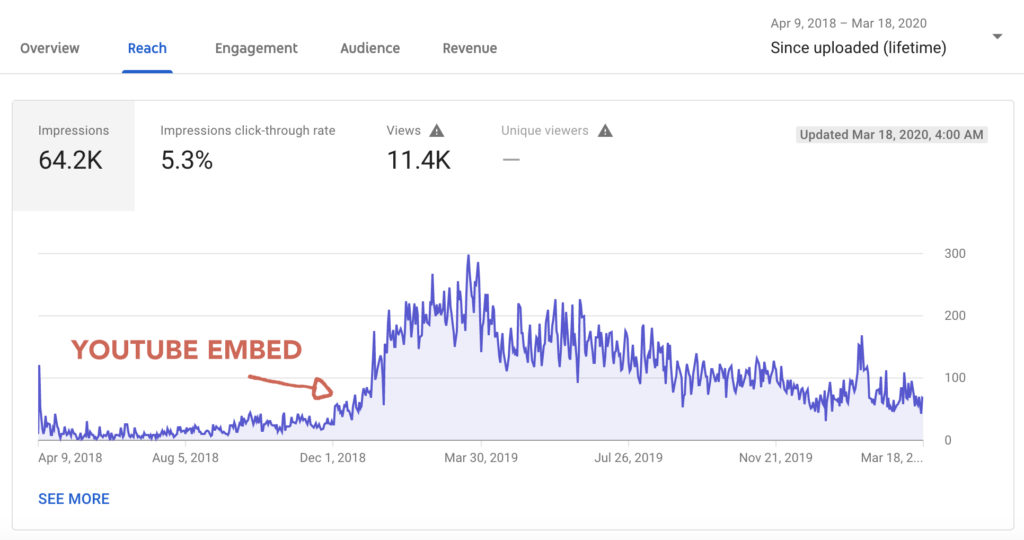
When you create a blog post with the intent of being able to repurpose that asset, it’s important to structure your post in a way that makes it easy to convert into other assets in the future.
Let’s take an example of a post that hasn’t been repurposed yet, but could very well be repurposed in the future. I recently published a blog post that acts as a guide to paid & organic LinkedIn marketing. The sections within the blog post are split into two key themes and subjects:
Organic Marketing Tactics For LinkedIn
And…
Paid Marketing Tactics For LinkedIn
And within each section, I highlight different opportunities:
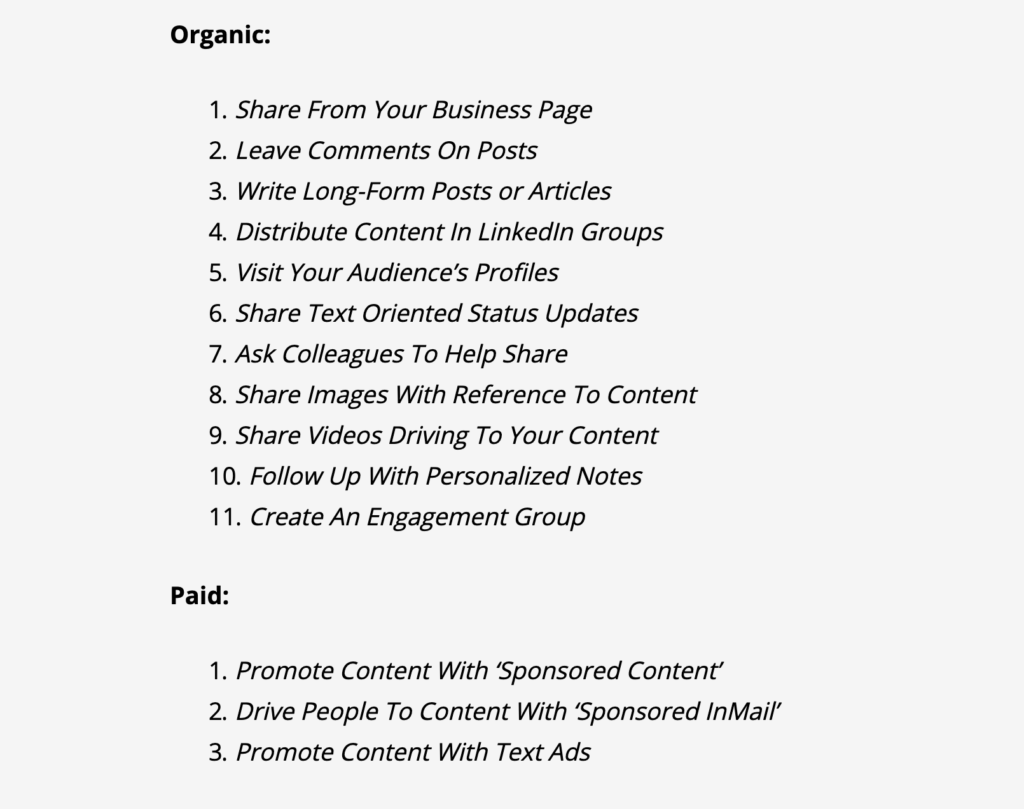
This format arms you with the key speaking points for two new videos.
One that is all about generating organic reach using LinkedIn and the second all about generating results, using the various paid opportunities on LinkedIn. This is the exact strategy I applied when I wrote: T-Shaped Marketers: Here’s What You Evolve Into Next. It was a standard blog post that lived on my personal blog:
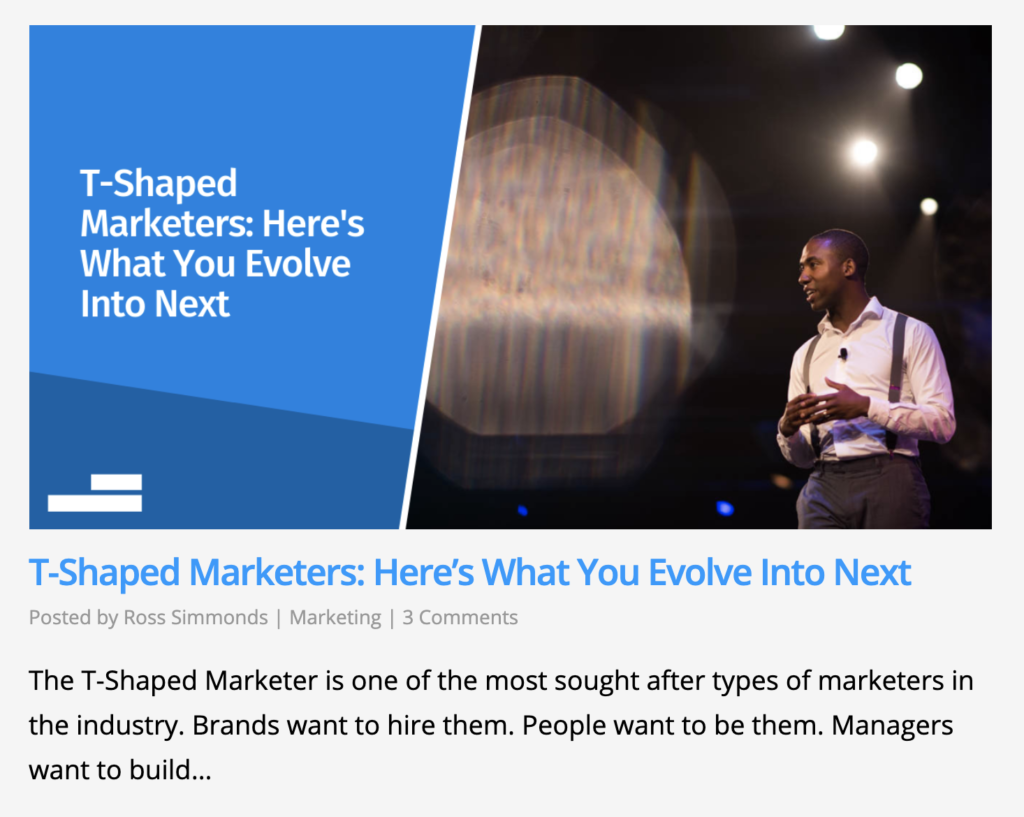
But I took core elements of that blog post and turned them into a YouTube video:
Repurposing blog posts into YouTube videos can be a great way to arm you with an asset that is embeddable, connects with an audience that doesn’t enjoy reading and is more engaging than the written word.
Turn A Blog Post Into A Lead Magnet
One of the biggest mistakes that marketers make is assuming that they’ve reached everyone that could possibly care about their content after pressing publish. In reality, most assets never reach their full potential because they don’t distribute that asset after pressing publish.
This guest blog post that I wrote for Kim Garst had 8,000 shares on social media:
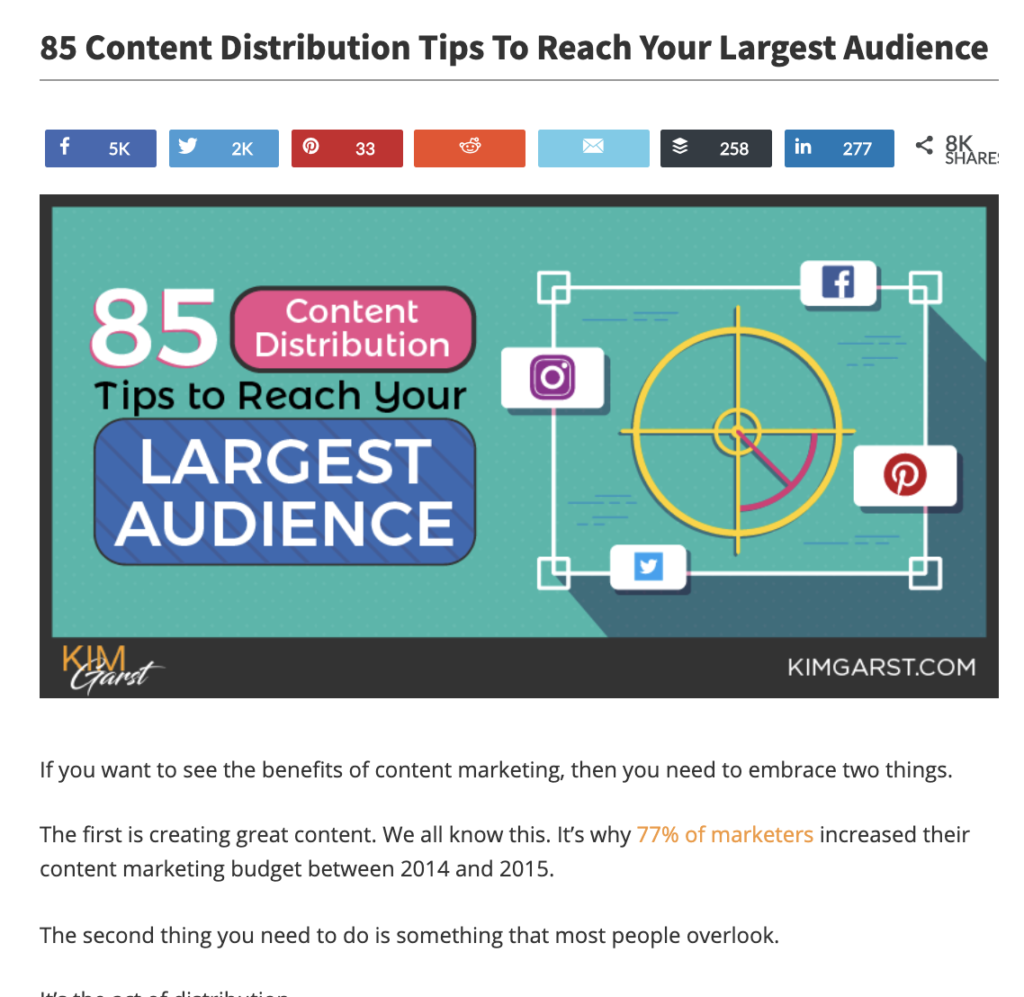
The traction generated by this post demonstrated that there was content-market fit. Marketers resonated heavily with this idea of distribution and it presented an opportunity to repurpose this same blog post into a lead magnet.
So…
I turned it into a distribution checklist for marketers.
This free content distribution checklist doubles as a resource to help brands create their content repurposing workflow.
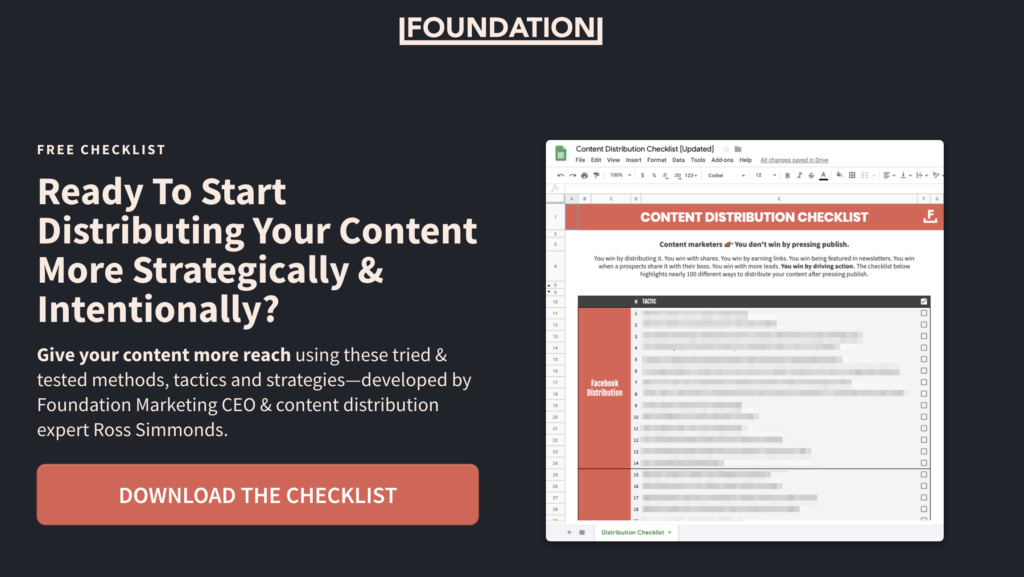
Since going live…
The content distribution checklist has been downloaded more than 14,000 times.
But it didn’t end there. The original blog post about content distribution then evolved into shorter blog posts:
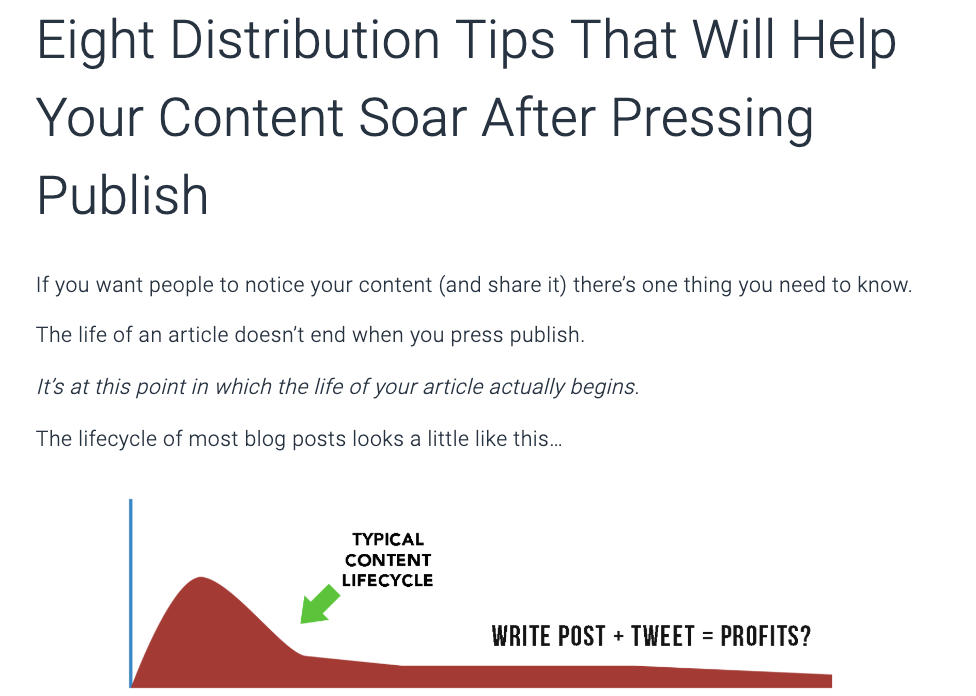
It also turned into YouTube videos:
It went live as a White Board Friday on Moz:
And it was even repurposed into an X thread (formerly known as a Twitter thread):
ULTIMATE DISTRIBUTION THREAD
20 of my favorite distribution channels & tactics for spreading B2B content after hitting publish.
These are great techniques for brands who realize the job isn’t over when you hit publish.
Dive in, drink coffee, ask questions, & add your own.
— Ross Simmonds (@TheCoolestCool) February 13, 2020
All from one blog post…
This is the opportunity that exists when you embrace content repurposing.
Hopefully, I’ve opened up your mind to the possibilities of leveraging content repurposing in your content marketing mix. If you need a more hands on & tactical break down of the methods for repurposing — this Distribution Playbook might be exactly what you need. It’s not only a webinar training, but also comes with a few tools and frameworks that you can use to improve your approach.
The next time you press publish on an asset, don’t assume that the job is done.
That asset may just be the opportunity you need to capitalize on to create a successful content marketing engine that drives results for years to come.








